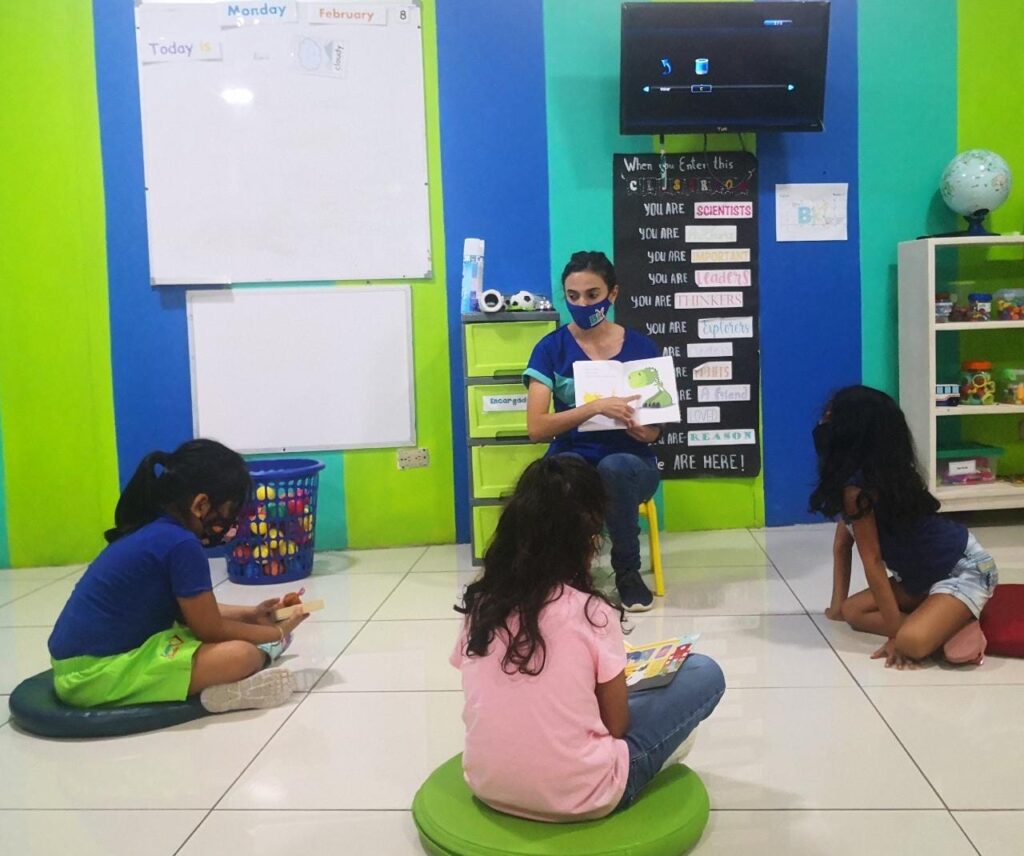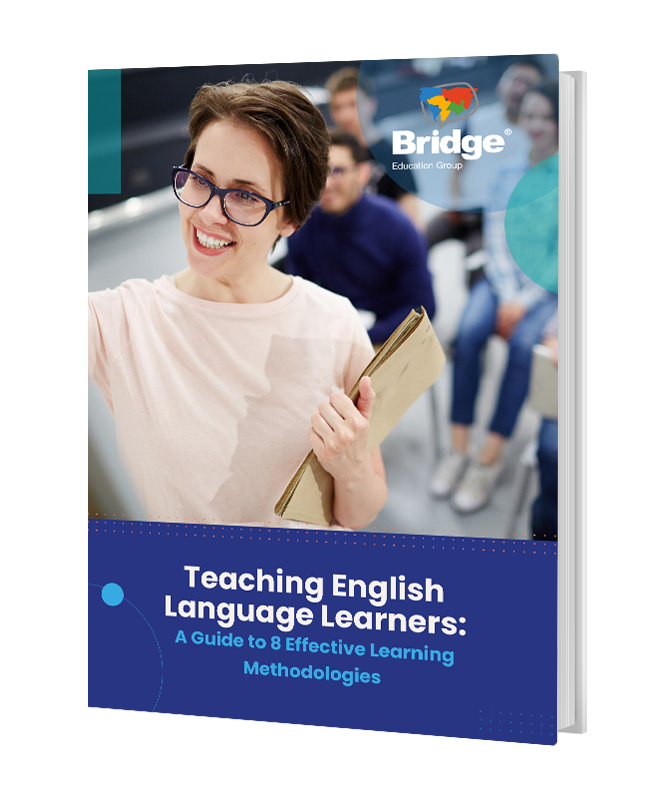Teaching grammar is an essential aspect of your role as a language teacher. Your students rely on you to provide them with the tools necessary to engage in conversations with others, and grammatical structures make up much of the linguistic toolbox. But teaching English grammar can seem like a daunting task, perhaps even a little dry, especially when you’ve been doing it for years. Maybe it’s time to breathe a bit of new life into your lessons with these strategies for teaching grammar to English language learners!
If you’re new to teaching, you’ll want to get initial training and qualification with a TEFL certificate. You can explore our online TEFL courses to get started!
Strategies for teaching grammar to young learners
If there’s anything that can be said with certainty, it’s that young learners need frequent stimulation to sustain engagement. Here are some ideas to fulfill this need when teaching English grammar.
Incorporate songs
Have you ever had a song stuck in your head that you couldn’t seem to shake for hours, perhaps even days? Take advantage of your students’ innate music memory and use songs for teaching English grammar. If you’re teaching the simple tenses, you might use The Tenses Song (Past, Present, and Future) to lay a foundation for when to use these tenses.
Alternatively, you could be bold and create your own jingles that reinforce the grammatical structures you’re examining.
The following example might be performed by splitting the class into two groups, having one group begin and the other respond.
A: Peter maked his bed?
B: Peter made his bed.
A: Peter goed to the market?
B: Peter went to the market.
A: Peter eated pizza for dinner?
B: Peter ate pizza for dinner.
All: What a great day Peter had!
After one round, students can switch roles. You can create a catchy melody or pair it with that of a well-known song.
Check out more strategies for incorporating ESL songs into your grammar lessons!
Kickstart your English language teaching career with
Professional TEFL/TESOL Certification
Get CertifiedIntegrate opportunities for play
Incorporating games into grammar instruction can be incredibly effective and engaging. You can use games to introduce new structures, reinforce what you’ve just examined, or both! Consider games like Board Race that utilize TPR (Total Physical Response) to aid in retention and burn a bit of extra energy.
To play Board Race with a grammar twist:
-
Divide your students into small groups and have them congregate in different corners of the room.
-
Place index cards with clearly written past tense irregular verbs in a common space, with equidistance from each of the groups.
-
Say a word out loud in the present tense, and have students chat with their peers to figure out what past tense verb they need to locate on the board.
-
Have students send one representative to the board to grab the word before the other teams do.
Make this silly (and slow down the pace) by having students move in different ways, such as bear-crawling, skipping, or swimming through the air.
You don’t need to reinvent the wheel. Check out these effective ESL games and activities!
Pair visuals with communicative opportunities
Visuals can serve as wonderful aids to teach English grammar, spelling out rules for students explicitly (deductive teaching), demonstrating the use of a particular structure in context, and asking students to notice structures and draw their own conclusions about the rules (inductive teaching).
If you’re using a deductive approach, you might show your students a simple chart with two columns for the simple present and the simple past tenses. You’d explicitly tell students that when a verb is regular in the present tense, you simply add an -ed (or just the -d, if the base form ends in “e”) to make it past tense.
On the other hand, an inductive approach might be that you showcase sets of images with short sentences underneath narrating what’s happening in the images. For example, the first picture in a set might show little Sara sitting contentedly with a scoop of ice cream, with the subtitle “Sara likes ice cream.” The second picture in the set might show little Sara again, this time with ice cream all over her face and an empty bowl. She has a satisfied grin on her face and the subtitle reads “Sara liked her ice cream a lot.” Students would see that the past tense is indicated by the -ed ending (and the empty bowl).
But why stop there? Give students an opportunity to explore the language and solidify their understanding with communicative activities.
-
Instead of giving the students the descriptive subtitles for the images, have them create their own. What’s happening in the picture? What kind of ice cream did Sara eat? Where did she eat it, and with whom?
-
Have students create questions for each other that use the target language. Have them move around the room and learn more about their peers. Then, they can report their findings in a culminating discussion.
-
Engage the students in group storytelling. Have them sit in a circle and remind them of the language you want them to use. Let their imaginations run wild! Have one student start the story (“Once upon a time…”) and have another student add to that idea, continuing until everyone has contributed. If your students are able to work autonomously, break them into smaller groups instead.

Not only do these extension activities afford more practice for students, but they give you a chance to notice output trends, offer corrective feedback in the moment, and keep students engaged.
Looking for more ways to use storytelling in the classroom? Learn more about TPRS, a language acquisition strategy that focuses on the co-creation of stories.
Strategies for teaching grammar to teens and adults
Teaching grammar to teens and adults comes with its own set of challenges that we have to be aware of, like attitudes about grammar in general and interference from other languages they already speak, but teaching grammar to older students also presents the opportunity to capitalize on higher-order thinking skills and cognition.
Meet them where they are
Spend time getting to know where your students are. What previous knowledge do they have when it comes to the grammatical structure you’re introducing? How effective are they in using it already? Knowing that your students’ experience is likely varied creates opportunities for you to conduct informal needs assessments, gather qualitative data, and build from there.
-
Take a few minutes to sit with each student and ask them questions that require the use of particular structures (e.g., what they did over the weekend to gauge their familiarity with the past tense structure).
-
Create a question set and have them interview each other as you circulate, listening for specific lexical chunks.
-
Have students complete a survey that asks them to use a structure in context, and use that information to establish your next steps.
Whatever you do, ensure you have a baseline for their exposure to and comfort level with the language first.
Make use of pop culture
Most likely, your enthusiasm about a grammar point has been met with grumbles from your students, perhaps even an “It’s boring, teacher!” It’s necessary for you to figure out how to get your students to see that grammar is all around them.
Think about how you can tap into popular culture. This can range from contemporary music, viral YouTube videos, memes, and interviews with celebrities to conversations on social media, all of which provide fertile ground for authentic language use. Pull cultural artifacts to engage your students, and examine the language that is being used. Show a meme or reel, and then have them tell you what happened before or after the action, or ask them to describe what they see.

Create context through role-playing
While it can be helpful to isolate grammatical chunks to understand how they work, examining those chunks in isolation doesn’t guarantee transference to output. Students need to see how grammatical structures operate in context. Ask yourself how you can get students to use this language in authentic exchanges.
Create opportunities for your students to engage with language in scenarios that mimic real life, or better yet, have them create and perform those scenarios themselves through role-play! Debrief on language use after their performances.
Check out these ESL grammar lesson plans.
Learn about 8 ESL methodologies and get sample activities with the free guide to
Teaching English Learners: Popular ESL Learning Methodologies
downloadAdults like games too!
Kids shouldn’t be the only ones who get to have fun in the language classroom! It’s always so gratifying to see older students light up when you share that they’ll be playing a game. Getting students to tap into their inner child not only lessens the stress sometimes associated with learning something new, but this heightened engagement will increase retention.
Have your students share some of their favorite games from childhood and see how you might be able to use (even if loosely) those games for teaching English grammar. Your students will appreciate your commitment to connecting with them, and they’ll have a chance to share unique pieces of their cultural identity with their peers.
Here’s an example from the Bridge Specialized Certification in Teaching English Grammar course of an adult class using Tic-Tac-Toe to practice the present continuous tense:
Teaching grammar to English language learners can be incredibly engaging and rewarding for both you and your learners. Your students will benefit if you diversify your strategies for teaching grammar, and you’ll freshen up your teacher toolbox as well.










